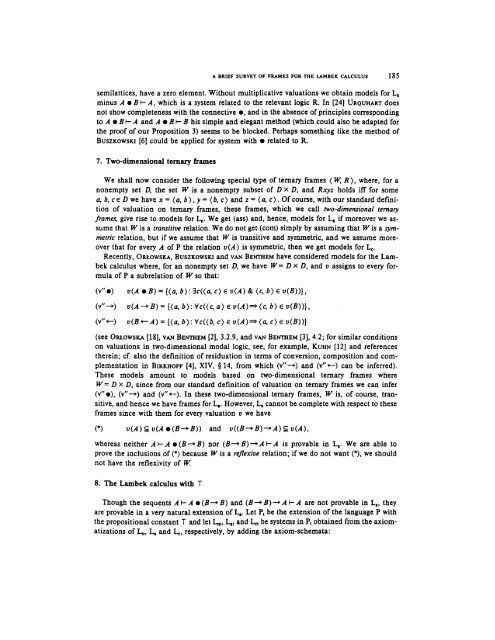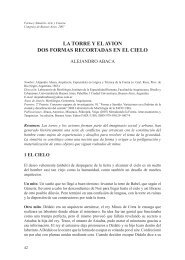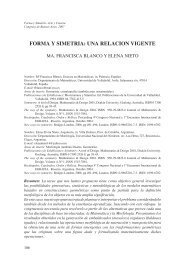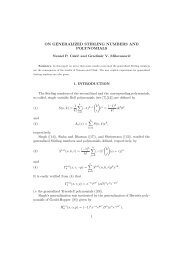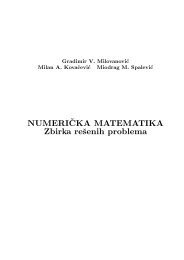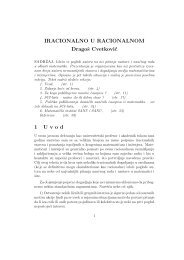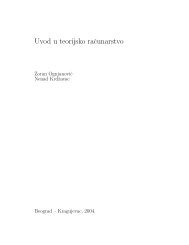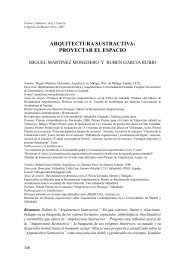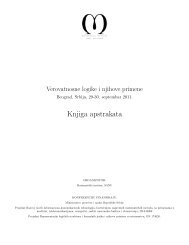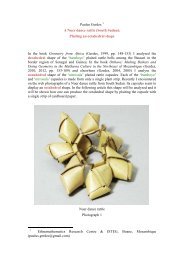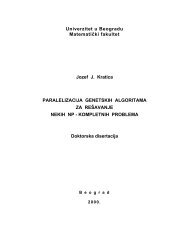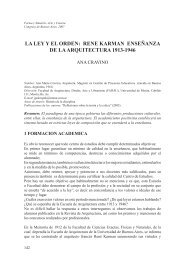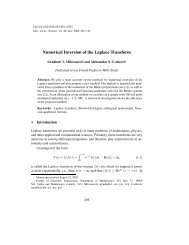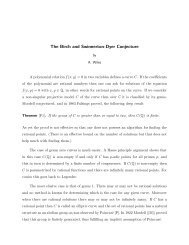A BRIEF SURVEY OF FRAMES FOR THE LAMBEK CALCULUS
A BRIEF SURVEY OF FRAMES FOR THE LAMBEK CALCULUS
A BRIEF SURVEY OF FRAMES FOR THE LAMBEK CALCULUS
- No tags were found...
Create successful ePaper yourself
Turn your PDF publications into a flip-book with our unique Google optimized e-Paper software.
A <strong>BRIEF</strong> <strong>SURVEY</strong> <strong>OF</strong> <strong>FRAMES</strong> <strong>FOR</strong> <strong>THE</strong> <strong>LAMBEK</strong> <strong>CALCULUS</strong> 185semilattices, have a zero element. Without multiplicative valuations we obtain models for Lhminus A 0 B + A, which is a system related to the relevant logic R. In [24] URQUHART doesnot show completeness with the connective 0, and in the absence of principles correspondingto A 0 B I- A and A 0 B I- B his simple and elegant method (which could also be adapted forthe proof of our Proposition 3) seems to be blocked. Perhaps something like the method ofBUSZKOWSKI [6] could be applied for system with related to R.7. Two-dimensional ternary framesWe shall now consider the following special type of ternary frames (W, R), where, for anonempty set D, the set W is a nonempty subset of D X D, and R~ryz holds iff for somea, b, CE D we have x = (a, b),y= (b, c) and z= (u, c). Ofcourse, with our standard definitionof valuation on ternary frames, these frames, which we call two-dimensional ternaryframes, give rise to models for La. We get (ass) and, hence, models for L, if moreover we assumethat W is a transitive relation. We do not get (com) simply by assuming that W is a symmetricrelation, but if we assume that W is transitive and symmetric, and we assume more-over that for every A of P the relation u(A) is symmetric, then we get models for L,.Recently, ORLOWSKA, BUSZKOWSKI and VAN BEN<strong>THE</strong>M have considered models for the Lambekcalculus where, for an nonempty set D, we have W = D X D, and u assigns to every formulaof P a subrelation of W so that:(~”0) u(AoB)={(u, b):3c((u,c)~u(A)&(c, b)Eu(B))},(v”+)(v”+u(A+B) = ((u, b): Vc((c, a) E u (A)a(e, b) E u(B))},u(B+A) = {(u, b): Vc((b, c) E u(A)-(u, c) E u(B))}(see ORLOWSKA [18], VAN BEN<strong>THE</strong>M [2], 3.2.9, and VAN B ~ E [3], M 4.2; for similar conditionson valuations in two-dimensional modal logic, see, for example, KUHN [12] and referencestherein; cf. also the definition of residuation in terms of conversion, composition and complementationin BIRKH<strong>OF</strong>F [4], XIV, 0 14, from which (v”-+) and (IT”+) can be inferred).These models amount to models based on two-dimensional ternary frames whereW= D x D, since from our standard definition of valuation on ternary frames we can infer(v”.), (v”+) and (v”~). In these two-dimensional ternary frames, W is, of course, transitive,and hence we have frames for L,. However, L, cannot be complete with respect to theseframes since with them for every valuation u we have(*I u(A) E u(A o(B4B)) and u((B+B)-+A) E u(A),whereas neither A I- A 0 (B+ B) nor (B+ B)+ A I- A is provable in L,. We are able toprove the inclusions of (*) because W is a reflexive relation; if we do not want (*), we shouldnot have the reflexivity of W8. The Lambek calculus with TThough the sequents A I- A 0 (B+ B) and ( B4 B) + A I- A are not provable in L,, theyare provable in a very natural extension of L,. Let Pt be the extension of the language P withthe propositional constant T and let L1, L,, and La be systems in PI obtained from the axiomatizationsof L, L, and L,, respectively, by adding the axiom-schemata:


